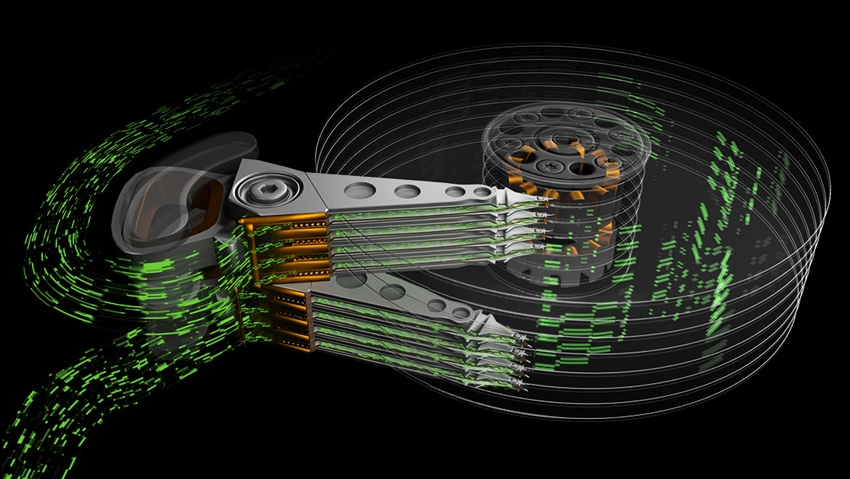Seagate Technology announced a way to potentially double its HDD performance while retaining the high capacity that they are known for, Multi Actuator Technology. This new technology is aimed at hyperscale data centers where price, performance, and capacity all need to be optimized. The technology can also help address other issues of expanding data and the need to store and analyze it.

On a Hard Disk Drive (HDD) the actuator moves the hard drive’s heads over the media surface, to read and write data. At the end of each moving actuator arm, is the recording head. Today, all HDDs have a single actuator that moves all the read-write heads together in synchronous motion. While this technology has proven itself over the years to work reliably, it also limits the upper level of performance.
Seagate’s solution to this is simple enough; if the number of actuators limit performance, add more. For its first generation of the new product, Seagate will be adding one actuator for two total on a single pivot point. According to the company, half the drive’s recording heads will operate together as a unit, while the other half will operate independently as a separate unit. This enables a hard drive to double its performance while maintaining the same capacity as that of a single actuator drive.
From a performance perspective, Seagate claims that the idea of parallelism can be used within a single drive. Basically two different sets of data can be retrieved simultaneously, which would “double” the performance of the drive. If one needed two sets of data they would be delivered at the same time versus one after another. This means users can purchase higher capacity hard drives and get roughly twice the performance lowering costs of price per TB.
What is most interesting about this technology is that it solves concurrent problems: capacity and performance, all the while controlling costs (assuming Seagate can introduce this technology to market for a good price). If one were able to double performance at really high capacity they could stave off switching over to flash, depending on use cases. Combining this technology with other technologies that result in higher capacity is also another area to watch.




 Amazon
Amazon